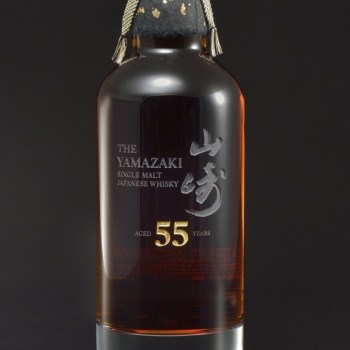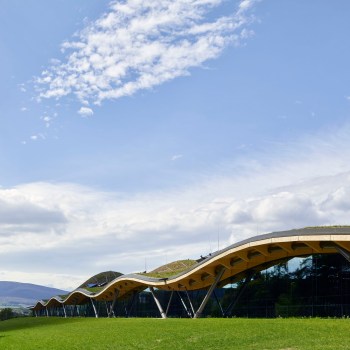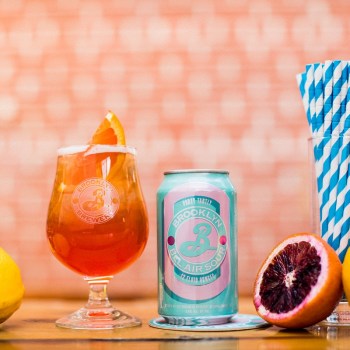Greenbanks Tasmanian Whisky Co is a new entrant into the Tasmanian whisky industry, and one that is embracing the world-renowned quality of Tasmanian whisky, but it is also a new entrant that is bringing something new to Tassie, whisky production on a scale the island has not seen before.
Greenbanks was co-founded by Hugh Roxburgh, and has a distillery that is capable of producing three million litres of alcohol (LALs) per year, which he told Bars and Clubs, he estimates to be around one-and-half times the current industry production on Tasmania as whole. But rather than being this behemoth that comes in and takes everything over, Greenbanks is looking to bring a volume and scale to enable all Tasmanian whisky producers to tackle one of their biggest domestic and international barriers – price.
“We saw an opportunity in Tasmania, because Tasmania has won almost every award there is to win globally, when it comes to whisky,” Hugh told Bars and Clubs.
“The major challenge that the industry in Tasmania currently faces is the very limited supply of volume produced and the very high price point.
“That’s the problem we’re trying to solve. If you look at Tasmania today, the industry produces around two million LALs per annum. That pales in comparison to Japan at around 200 million LALs and Scotland, that we understand produces around 700 million LALs.
“This means that even if Tasmania was to increase production by 10 times, it’s still only one-tenth of what Japan currently produces. We know that the whisky that gets produced in Tasmania is of exceptional quality, but due to the lack of supply, the result is the price points are very high. The average price for a standard 700ml bottle of Tasmanian whisky is between $200-300, and that’s the problem that we are really trying to solve.
“We saw an opportunity in Tasmania because of that [pricing] and also because of the lack of scale distilleries and contract distilleries that could supply world-class whisky at a more accessible price point.”

The contract distilling part of the Greenbanks proposition is aimed at helping new and existing Tasmanian whisky producers, who would otherwise find the intensive capital investment that is required to make whisky at scale too prohibitive, as Hugh explained.
“After building a distillery you then have to make large quantities of whisky and then wait several years to see any cashflow on that,” he said. “The contract business could be for new entrants, where they can outsource the capex of building their own distillery. It could be for existing, smaller-scale distilleries that want to get to get to scale and build out their volume and then they can focus their money and capital into marketing and branding. Or it could be larger scale established distilleries that want to create new categories and innovate.
He added: “Most distilleries in Tasmania will produce single malt first off pot stills, which is a traditional Scottish style of single malt whisky. Many people might be surprised to know that only 10 per cent of whisky that’s produced in Scotland is single malt. Ninety per cent is not single malt whisky, instead there could be blended whisky, blended malt whisky, single grain whisky, etc.
“With our setup, we can provide innovation and new categories to existing players. That could be blending stock, or if they want to see new styles of whisky like a rye whisky or a wheat whisky, or blended malt. It could be from the big major players who see Tasmania as an interesting whisky geography category onto itself, and with our scale, we can then provide them world class whisky and scale as their brand grows.”
Hugh told Bars and Clubs that the contract distilling business will provide partners with a complete end-to-end solution, everything up to bottling. There will be a 1000-litre R&D still that can trial certain recipes, mash bills, strains of yeast to get to where they are happy with their recipe, Greenbanks will then be able to scale up to its production still.
Hugh added: “We also have industry leading automation and equipment, to give our customers confidence that we can replicate those results consistently. Then from the actual production of the whisky we will then take care of the barrels, filling the barrels, storing them our ATO-bonded warehouses and all the tracking of that as well through our industry software.”

In addition to the contract distilling Greenbanks Tasmanian Whisky will also produce its own whisky, Hugh said: “We’re working on brands and barrels now, we really want to have our own brands be at a more accessible price point, at sub $100 and then also produce other SKUs.”
In order to develop the distillery, the partnerships and the brands Hugh recognised the need to put a strong team together, and he talked through that process with Bars and Clubs.
“I originally met John Slattery when he was working at White Label and he had experience of making American-style whisky under his belt, and also Scottish single malt experience as well, so he was ideal for what we’re doing at Greenbanks, and he is our Head Distiller and Executive Director. Then in 2021 I was introduced to Tim Salt, the former CEO of Diageo Australia and Tim has come on-board as Executive Chair.
“We also have two high-quality, independent Board Directors [in Marc De Stoop and Tony Davis] and then late last year we brought on Rebecca Walsh, who is a very experienced distiller and highly-regarded in Tasmania. She was a Senior Distiller at Lark and then Production Manager at White Label, and she’s our Operations Manager.”
There’s an obvious an excitement in talking to Hugh about this new project, but that excitement is not just about building a new distillery, or creating a new brand, it’s excitement about the potential for Tasmanian whisky.
“We need as an industry as a whole, to significantly grow volume. Tasmanian needs to really take advantage of the opportunity in front of us over the next five 10 years. The only way Tasmania can become the next great whisky province that we believe it can be, is by significantly increasing the volume.
“If you are going into a supermarket into the UK or into Japan or wherever it may be, the only way you’re going to get shelf space that sees Tasmanian whisky next to Japanese whisky, or Canadian whisky or Scotch whisky is by having a number of really successful brands, and the only way you can get more successful brands is by having significantly more volume.”



